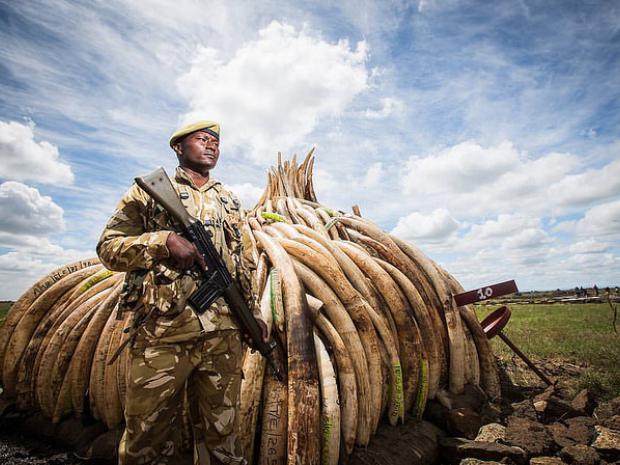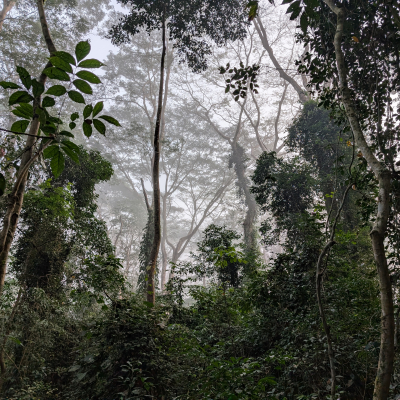Africa’s wildlife is disappearing at an alarming rate, encroached on by a human population set to double by 2050.
The latest European Commission report on conserving the continent’s biodiversity is entitled ‘Larger than Elephants’, reflecting that the species and landscapes at risk go far beyond Africa’s iconic mammal. The impact of species loss and environmental degradation will in turn be much ‘larger than wildlife’: it will affect local livelihoods, climate change, migration, peace and security.
“Wildlife conservation is as much about people as it is about plants and animals,” said Commissioner Neven Mimica, speaking at the launch of the report in Brussels, which outlines how to save what can still be saved by uniting local, national and international forces. The Commissioner stressed that wildlife conservation should not be regarded as a luxury imposed on Africa, but should be recognised as the basis of health, livelihoods and regional stability.
“Africans in rural areas are the first to suffer when these resources are depleted,” said Mimica. “The loss of Africa’s natural capital will feed into a vicious circle of increasing poverty, migration, conflict, insecurity, collapse of governance and plunder of biological resources.”
Those under threat include clean water, sustainable fishing and bushmeat, fertile soil for crops, rich grazing areas for livestock, and forests – meaning sustainable wood, clean air and a carbon sink to slow climate change. These resources are interlinked, fragile and vulnerable to degradation.
Pressures on wildlife
Rapidly expanding human populations are putting increasing pressure on wildlife, as people’s need for food and fuel leads to forests being cleared for firewood, charcoal, cropland and grazing for livestock. On top of this steadily-growing burden are the incursions into wildlife made by logging and mining concessions, oil and gas companies, and poachers.
Most Sub-Saharan African countries are party to international environmental conventions which safeguard wildlife, and ‘Protected Areas’ cover 14% of the continent. However these designations do not always carry much weight. Permits for industrial oil and mineral exploration and extraction frequently overlap with Protected Areas, even those designated as UNESCO World Heritage Sites. WWF has calculated that 26% of leased oil and gas concessions in Africa are in Protected Areas, rising to 41% if ‘not yet leased’ sites are included.
“Unfortunately, particularly in Central Africa, many World Heritage Sites are on the red list,” said Dr. Conrad Aveling, an author of the report. “Twelve sites out of 41 are on the List of World Heritage in Danger. You have oil exploration rights being granted by national governments – completely contrary to the international treaties these countries have signed. Oil exploration is not allowed in World Heritage Sites, and in most of these countries the national laws do not allow exploration in Protected Areas either. So it’s doubly illegal, but it’s happening.”
A further serious challenge outlined in the report is the illegal trade in ivory and rhino horn, which frequently ends up funding rebel and terrorist organisations.
“There are many examples of militias, armed bandits and rebels, notably in South Sudan, Central African Republic and Democratic Republic of Congo, which are involved in illegal natural resource use as a way of funding their rebel activities,” said Dr. Aveling. “They create tremendous insecurity for rural people living in remote areas, often close to Protected Areas.”
Around 35,000 elephants are poached each year, from a population of less than 500,000. Beyond funding conflict, killing elephants has a destabilising impact on the environment. Like some at-risk primates, elephants are natural seed dispersers, depositing new plants along their travels. Their dwindling numbers and shrinking territory as roads and cattle fences criss-cross the savannah threaten the existence of plant life and other animals – and with them, the humans who depend on them.
Addressing these concerns will require commitment at all levels, from local communities to governments, as well as expertise, education and serious funding.
Towards sustainability
The first step is for politicians, businesses and citizens to recognise the enormous value of protecting wildlife, from the obvious benefits such as tourism income to the immeasurable benefits such as clean air. The next is to protect and conserve what it’s still possible to save, which is ever-shrinking; and finally to develop alternative, sustainable ways of living alongside, and making a living from, wildlife.
When it comes to poaching, the report makes several recommendations, including investment in training and equipment for park rangers, strengthening the judicial system to improve an extremely low ratio of arrests to prosecutions, harsher sanctions and international cooperation to target buyers in South East Asia.
Credit: Mwangi Kirubi
Stopping oil and mineral exploration in Protected Areas will require a turn-around at the national level. “Poor governance absolutely undermines everything we are trying to do in biodiversity conservation in Africa,” said Dr. Aveling. “If the ruling people at the top of a country are not interested in conservation, it won’t happen on the ground.”
Raising awareness at the grassroots level is also essential to tackle issues such as logging and unsustainable bushmeat take-off. Extreme rural poverty makes it impossible for people to take a long-term view of wildlife resources. Of the 49 countries defined by the UN as “Least Developed”, 34 are in Africa. In the context of poor education and lack of other means to make a living, wood, bushmeat and ‘exotic’ animals are often viewed as cash crops. “Any future strategic approach has to focus on the link between livelihoods and preserving ecosystems,” said Dr. Aveling.
‘Larger than Elephants’ outlines several ways in which wildlife can be managed to take into account local and national interests, and in which donors such as the EU can provide technical support and galvanise funding. It also points to an encouraging rise in political and economic unions across Africa which can play a role in conservation, and of NGOs which are increasingly putting pressure on governments.
EU support and partnerships
“The ‘Larger than Elephants’ strategic approach will be based on three pillars,” said Philippe Mayaux, Head of Biodiversity and Ecosystem Services at DEVCO, the European Commission’s Directorate General for International Cooperation and Development. “The field pillar focuses on conservation of Protected Areas and development activities around them; the national pillar focuses on institutional strengthening; and the international pillar includes law enforcement and the fight against poachers, trafficking and smuggling.”
Different funding sources are available for each pillar. The local aspect will mainly be supported by the European Development Fund (EDF), through the national development programmes created by the Commission in consultation with each national government. For example, DRC’s national programme supported by the Commission will focus on the management of local resources in five protected areas, including Virunga National Park.
The EDF will also support regional programmes focusing on networks of protected areas across national boundaries, with concerted efforts to tackle regional issues such as trafficking. €100 million will be dedicated to protecting ecosystems in West Africa; €80 million in Central Africa, €30 million in East/Southern Africa and €160 million for projects covering all African, Caribbean and Pacific countries.
At the international level, the EU will provide funding to protect biodiversity from its ‘global public goods and challenges’ budget line, amounting to €250 million.
In addition, many EU member states support conservation and development activities in Africa through their national development bodies. Better coordination between donors through the approaches outlined in ‘Larger than Elephants’ could help each euro to go further. “Member states including France, the Netherlands and Germany are now looking at the report as they decide how to spend funds under the 11th EDF, and producing national and regional indicative programmes,” said Dr. Aveling.
But the EU’s collective funding will fall far short of the estimated €6 billion needed over the next ten years to manage parks, boost law enforcement and support community programmes in the areas outside parks.
“For us, the report is a real asset for mobilising additional means,” said Mayaux. “For each type of activity we want to involve the best stakeholders, and use our funding in a smart way to bring investment from the private sector.”
One of the channels through which funding reaches civil society groups working on biodiversity conservation is through the Critical Ecosystem Partnership Fund (CEPF). It receives funding from the EU and six other global donors, and then makes the collective resources available in the form of grants to local groups.
“Conservation can’t be achieved by one actor in isolation,” said Jack Tordoff, CEPF’s managing director. “The conservation issues on the ground emerge from the interplay of different actors.”
Hear more from Jack Tordoff on working with different actors on sustainable management of national resources:
Tordoff stressed that conservation strategies are most effective when local communities have ownership. Too often, complex or non-existent land tenure rules mean that all parties have ‘open access’ to wildlife, with the result that no-one feels responsible for the longevity of the resource.
This trade-off between short-term needs and long-term sustainability is at the heart of Africa’s wildlife crisis.
“Do we privilege human beings in the short and mid-term, or also privilege the planet, and be sure that in the long term, the planet is livable and human beings can continue to be there in good health and wealth?” asked Mayaux. “I know what my answer is.”
Group
Further reading
- Read the full Larger than Elephants report here
- Critical Ecosystems Partnership Fund
- Best2.0
- BIOPAMA
- Virunga National Park
This collaborative piece was drafted with input from Philippe Mayaux, with support from the capacity4dev.eu Coordination Team. Image credit: 'As we prepare to set ablaze 105 tons of ivory...' by Mwangi Kirubi via Creative Commons under the ShareAlike license.





Log in with your EU Login account to post or comment on the platform.